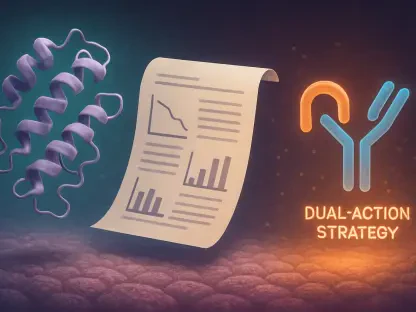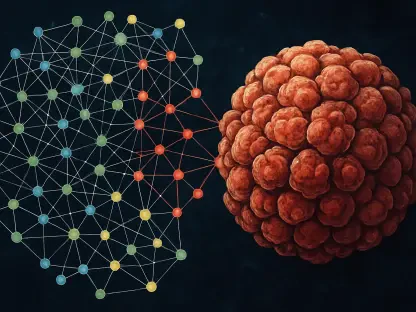The pharmaceutical industry is on the cusp of transformative changes over the next decade. Driven by new legislation and technological advancements, companies are rethinking traditional practices. The Biosecure Act, soon to be enacted in the US, and the rise of AI and automation, are key drivers of this evolution. Anna Codina, Senior Director of Biopharma & Strategic Market Development at Bruker BioSpin, provides essential insights into these trends and potential disruptions.
The Impact of the Biosecure Act
The forthcoming Biosecure Act aims to bolster national security by restricting federally funded drugmakers from engaging with biotechnology companies deemed as ‘companies of concern,’ particularly those in China. This legislation emerges against the backdrop of broader geopolitical tensions, primarily concerning the dependency on foreign entities within the pharmaceutical supply chain. Codina emphasizes the profound implications of this law for the industry. Over 120 US biopharmaceutical drugs currently under development may face significant setbacks. One of the most immediate consequences will be a rise in drug prices. This price hike is attributed to the removal of affordable R&D and manufacturing options previously available in China and other low-cost regions.
The reliance on international contractors for API manufacturing is notable, with only 28 percent of these manufacturers based in the US as of 2019. The economic benefits of outsourcing to countries like China, which include lower labor costs, have been instrumental in the pharmaceutical sector’s growth. However, the Biosecure Act compels companies to re-evaluate their outsourcing strategies. Pharmaceutical entities are exploring reshoring, insourcing, and forming strategic alliances to mitigate these challenges. Transitioning from cost-effective international sources to more specialized, and consequently expensive, Contract Research Organizations (CROs) and Contract Development and Manufacturing Organizations (CDMOs) is expected to elevate costs in the short term. Nonetheless, this shift is considered a necessary measure to comply with the legislative demands and ensure a more secure supply chain.
Reshoring and Strategic Alliances: Navigating New Realities
In response to the Biosecure Act, pharmaceutical companies are exploring new strategies to navigate the shifting landscape. A significant re-evaluation of outsourcing strategies includes considering reshoring, insourcing, and forming strategic alliances. The burden of transitioning from cost-efficient international sources to more specialized and expensive CROs and CDMOs is notable. However, reinforcing the supply chain’s security is viewed as an essential step in adapting to new geopolitical demands. These moves will undoubtedly incur short-term cost increases, but they are perceived as vital for long-term sustainability and compliance with the new regulatory environment.
The data from 2019 underscored the extent of reliance on international contract manufacturers, with only 28 percent of API manufacturers serving the US market being domestically based. Companies are now navigating the complexities of shifting these operations domestically or to allied nations, a move that could present numerous logistical and financial challenges. The strategic alliances formed in this climate must focus on not just economic feasibility but also the robustness and security of the supply chain. By adapting these new approaches, companies are positioning themselves to be more resilient in the face of evolving geopolitical landscapes.
Embracing Automation and Digitalization
In light of rising costs and regulatory pressures, the pharmaceutical industry is increasingly turning to automation and digitalization as solutions. Automated, self-driving laboratories in drug discovery are becoming essential. These innovations promise to reduce the high attrition rates that have long burdened the sector. Furthermore, AI-powered medicinal chemistry tools and self-describing data assets play a crucial role in streamlining and enhancing drug development processes. These digital tools enable the reutilization of data throughout the drug lifecycle. This reutilization fosters improved collaboration not just within individual companies but across a broader network of strategic partners. This integration significantly accelerates scientific discovery and reduces the time-to-market for new drugs.
The convergence of advanced automation and digitalization platforms heralds a new era of collaboration within the pharmaceutical industry. Companies now have the tools to integrate resources and share knowledge bases more effectively, which is pivotal in addressing global challenges swiftly. By leveraging AI and self-describing data assets, pharmaceutical companies stand to expedite the drug development process significantly. This interconnected approach not only enhances efficiency but also promotes a more agile and resilient industry capable of navigating complex geopolitical and economic landscapes.
Anticipating Future Disruptions
The pharmaceutical industry is poised for significant transformation over the next decade, driven by both regulatory changes and technological innovations. New legislation, such as the forthcoming Biosecure Act in the United States, is set to overhaul existing frameworks, compelling companies to adapt their strategies. Simultaneously, advances in artificial intelligence (AI) and automation are revolutionizing how pharmaceuticals are developed and manufactured.
Senior Director of Biopharma & Strategic Market Development at Bruker BioSpin, Anna Codina, offers critical insights into these trends and the potential disruptions they might bring. With AI’s capabilities in predictive analytics, drug discovery processes can become faster and more efficient. Automation can streamline production, reducing human error and costs, leading to more affordable medicines. Together, these forces will require pharmaceutical firms to innovate continually, ensuring they remain competitive and compliant with new regulations.
The confluence of legislation and technology heralds a new era for the pharmaceutical landscape, emphasizing agility, efficiency, and cutting-edge research. Anna Codina’s perspective highlights that while the road ahead may be challenging, it also opens doors to unprecedented advancements and opportunities in the industry.









